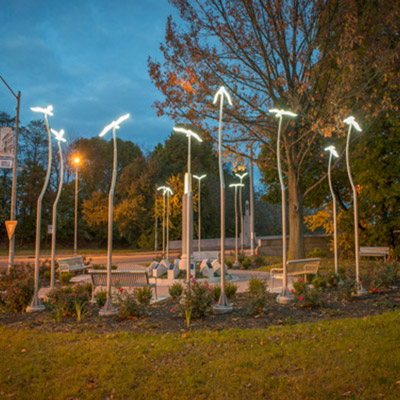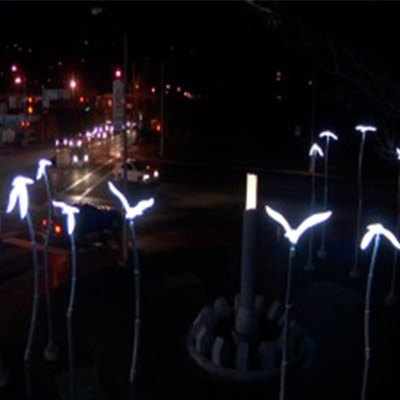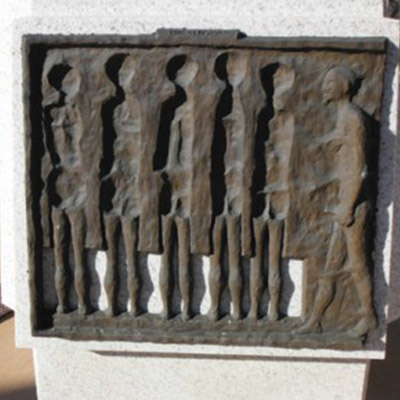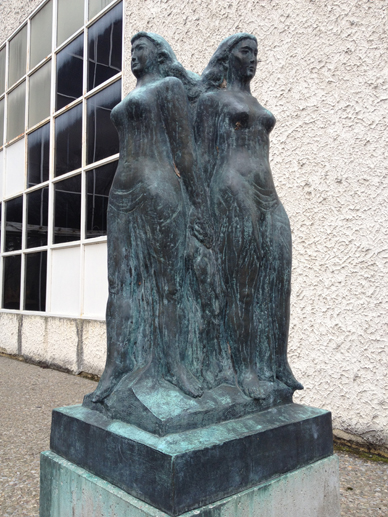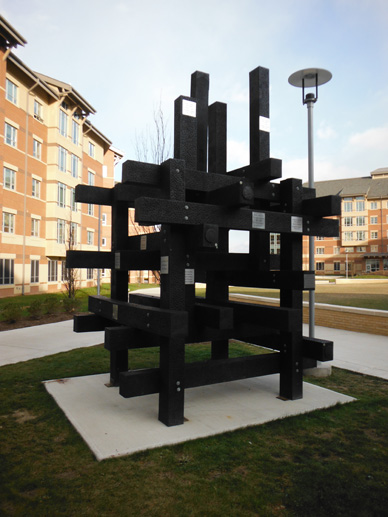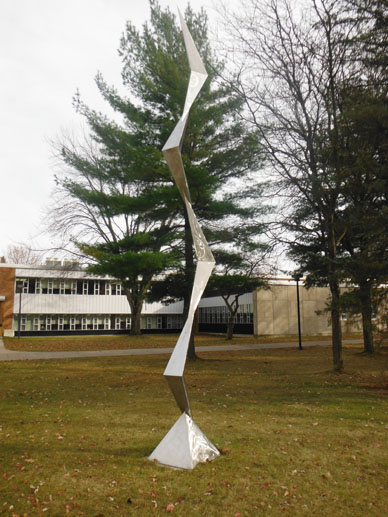Reviewed by Lee Shepherd
I couldn’t shake the image of that PBS commercial.
You know the one I mean.
The camera zeroes in on a piano quintet. The music builds to a fever pitch. The musicians flail in their seats, tossing their hair wildly. Piano strings pop, violin strings break, bow hairs come loose and the climax? The string players smash their instruments. The message: “Be more passionate.”
That’s how the Brentano String Quartet plays – with such passion and ferocity that their instruments almost burst into flames.
Sunday’s program (April 18) was the last concert in the Binghamton Philharmonic’s 2009-2010 Chamber Series; the Anderson Center Chamber Hall at Binghamton University was about two-thirds’ full to hear violinists Mark Steinberg and Serena Canin, violist Misha Amory and cellist Nina Lee. The quartet, which is in residence at Princeton University, is named after Antonie Brentano, thought to be the mysterious “immortal beloved” Beethoven addressed in a love letter.
Vigorous physical intensity – that seems to be the Brentano’s hallmark. The three upper strings writhe in their seats as they play, expressing the drama of every note, exaggerating every nuance just in case you might miss it. The cellist’s facial expressions range from grim to grimace, letting us know how deeply she is affected by overwhelming emotions.
Extreme physical motion and heightened showmanship to viscerally engage the audience seem to be the hallmark of all the new young quartets on the concert circuit today. You have to wonder what’s next – 3 D projections and glasses?
The program notes, written by Steinberg and Amory, also were over the top, waxing poetic about “terrible incomprehensible forces coexisting with the beauty of tender vulnerability” and “depths of yearning, straining upward and long, mournful sighing downward the apotheosis of Romanticism and individual subjectivity.”
Doesn’t this quartet know its own worth? The players are hugely talented and have no need to gild their lily with so many extraneous trappings. Their tones match perfectly, and they play seamlessly – handing off melodies to one another so that you can’t tell where one instrument stops and the next starts. They play as if listening to one heartbeat.
I closed my eyes for most of the concert and stuffed the program notes in my purse; only then could I truly enjoy the performance.
Franz Schubert’s “Quartettsatz in C minor” was intended to be the first movement of a quartet, but Schubert died before he could complete it. The Brentano played it at warp speed, of course, and with bursts of anger driving them forward.
Benjamin Britten’s “String Quartet No. 3” also was written in the last stages of the composer’s life – but he had time to finish the work. Within its five movements, there are many beautiful moments, but no over-arching melodies that you’d recall and hum the next day. A high point, literally, is the third movement in which the first violin, accompanied by only one other voice at a time, ascends to alpine heights, leaving listeners breathless.
What made the concert worth way more than the price of admission was the Brentano’s spell-binding rendition of Beethoven’s “String Quartet in C-sharp minor, Op 131.” It’s a massive piece of music, calling for mental and physical endurance. There was no stopping between movements that ranged from burlesque and chorale, to fugue, to playful scherzo, to a surprise happy ending in the consoling key of C-sharp Major.
With my eyes firmly shut, the passion of this sublime music came through loud and clear.
CHAMBER MUSIC FOR 2010-2011
Next season’s BPO chamber series features pianist Jon Nakamatsu on Sunday, Feb. 27, 2011, and the Miro Quartet on Sunday, March 27, both at 3 p.m. Visit www.binghamtonphilharmonic.org for more information.




